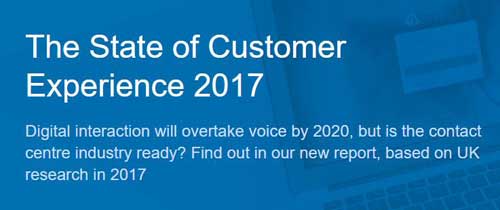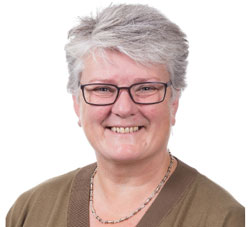Over 88% of organisations expect digital customer interactions to overtake voice by 2020 or sooner and 92% say customer experience can be linked to revenue, but just 29% are confident they can deliver a seamless customer experience across multiple channels, according to a new report, State of Customer Experience 2017 from West.

Drawing on qualitative and quantitative research with over 200 professionals involved in delivering customer experience, the report highlights a worrying technology gap. It reveals that the biggest obstacle to designing and delivering an exceptional customer experience revolves around flexibility, the ability to integrate, and the costs linked to creating the required architecture.
Over half (57%) of companies say that ensuring technology keeps pace with changing customer behaviours is a top priority, yet organizations across the board have been slow to adopt consumers’ favoured communication methods. While 49% say they offer email as a customer communication channel, only 39% use webchat and just 21% offer web self-service, which is rapidly becoming a top preference for consumers.
Worryingly, just 47% of contact center decision makers strongly agree that “my contact center meets my needs as a customer,” highlighting the gap between the ideal customer experience and the one many organizations are actually able to deliver.
Even though a huge majority (92%) agree that customer experience can be linked to revenue, just 35% of organizations are using customer experience as a performance indicator and only 25% are currently measuring customer effort, confirming that customer service metrics have failed to keep pace with the changing priorities of organisations.
Enda Kenneally, VP Sales & Business Development UKI at West Corporation:
 “With digital interactions set to overtake voice within just a few short years, organizations are going to need to make fundamental changes to people, processes and technology. Yet our study shows that while customer experience professionals understand the challenges ahead, they are preparing for the future against a backdrop of outdated technology and organizational structures, as well as dated processes and management practices.
“With digital interactions set to overtake voice within just a few short years, organizations are going to need to make fundamental changes to people, processes and technology. Yet our study shows that while customer experience professionals understand the challenges ahead, they are preparing for the future against a backdrop of outdated technology and organizational structures, as well as dated processes and management practices.
The pace of technological change and consumers’ willingness to embrace new communication methods means that your customer service operation needs the ability to add new channels without large capital investment and have the ability to re-configure your contact center within hours or even minutes if necessary. It may sound obvious, but it’s important to offer customers a range of communication channels, including self-service, or risk losing customers and revenue to more agile competitors.
About the Report
The “State of Customer Experience 2017 ” report draws on fresh insight from over 200 professionals involved in delivering customer experience to provide a fresh look at the state of the customer experience at the beginning of 2017.
You can download the full report here.




